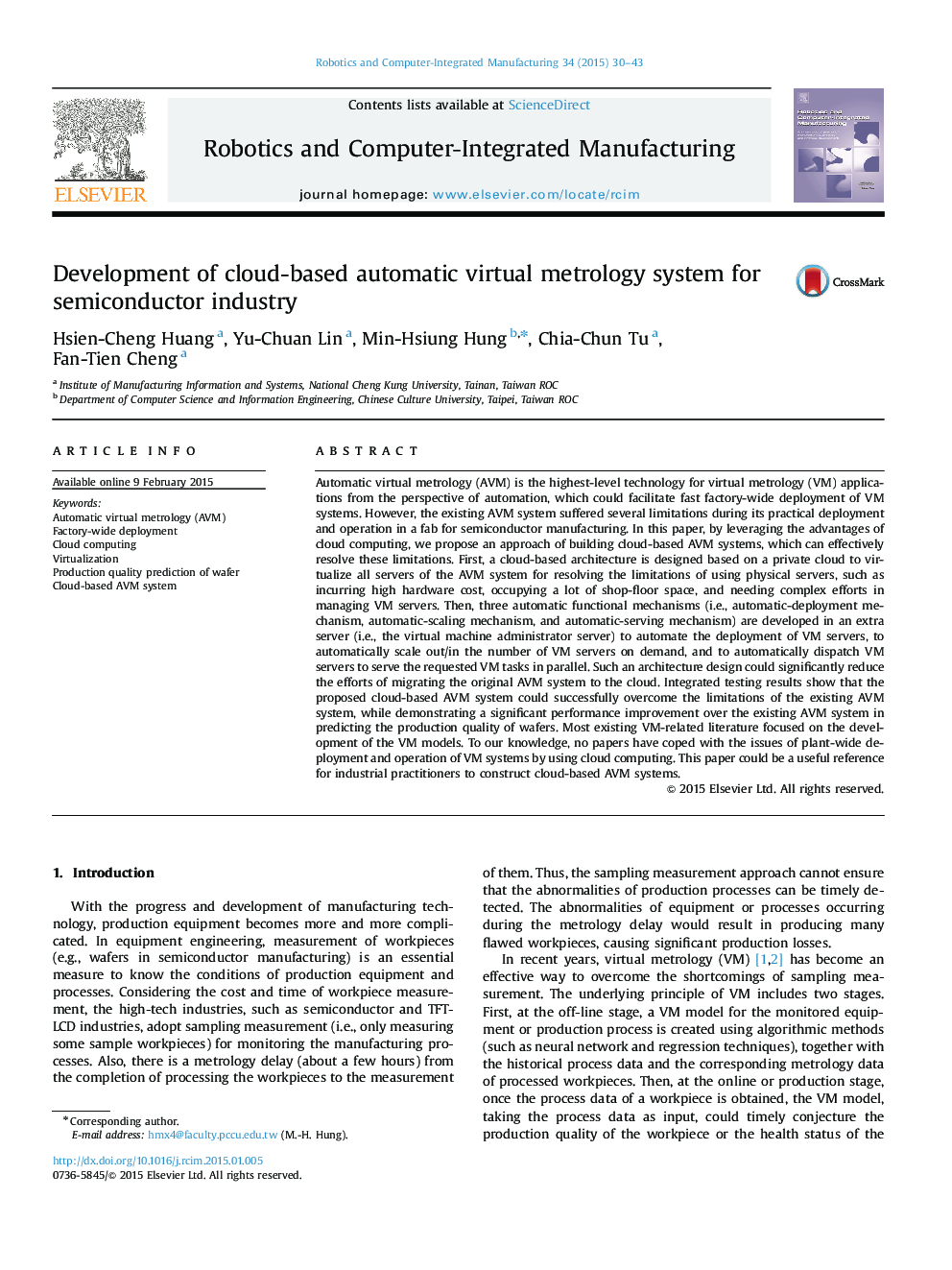| Article ID | Journal | Published Year | Pages | File Type |
|---|---|---|---|---|
| 413934 | Robotics and Computer-Integrated Manufacturing | 2015 | 14 Pages |
•An approach of building cloud-based AVM systems is proposed.•A cloud-based AVM architecture is designed based on private cloud.•The AVM system can be transformed into a cloud-based version with small efforts.•The limitations of the existing AVM system are addressed and overcome.•This paper could be a useful reference for constructing cloud-based AVM systems.
Automatic virtual metrology (AVM) is the highest-level technology for virtual metrology (VM) applications from the perspective of automation, which could facilitate fast factory-wide deployment of VM systems. However, the existing AVM system suffered several limitations during its practical deployment and operation in a fab for semiconductor manufacturing. In this paper, by leveraging the advantages of cloud computing, we propose an approach of building cloud-based AVM systems, which can effectively resolve these limitations. First, a cloud-based architecture is designed based on a private cloud to virtualize all servers of the AVM system for resolving the limitations of using physical servers, such as incurring high hardware cost, occupying a lot of shop-floor space, and needing complex efforts in managing VM servers. Then, three automatic functional mechanisms (i.e., automatic-deployment mechanism, automatic-scaling mechanism, and automatic-serving mechanism) are developed in an extra server (i.e., the virtual machine administrator server) to automate the deployment of VM servers, to automatically scale out/in the number of VM servers on demand, and to automatically dispatch VM servers to serve the requested VM tasks in parallel. Such an architecture design could significantly reduce the efforts of migrating the original AVM system to the cloud. Integrated testing results show that the proposed cloud-based AVM system could successfully overcome the limitations of the existing AVM system, while demonstrating a significant performance improvement over the existing AVM system in predicting the production quality of wafers. Most existing VM-related literature focused on the development of the VM models. To our knowledge, no papers have coped with the issues of plant-wide deployment and operation of VM systems by using cloud computing. This paper could be a useful reference for industrial practitioners to construct cloud-based AVM systems.
